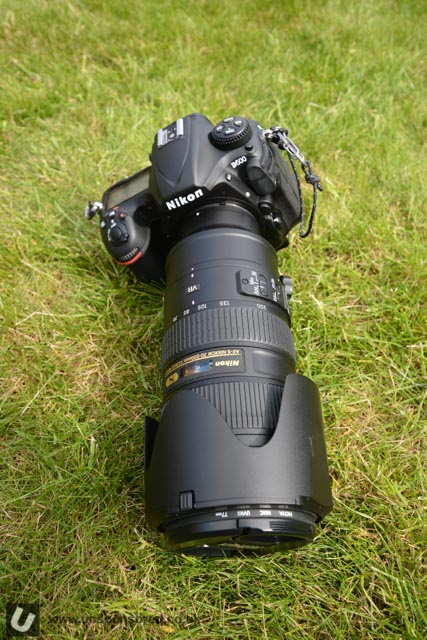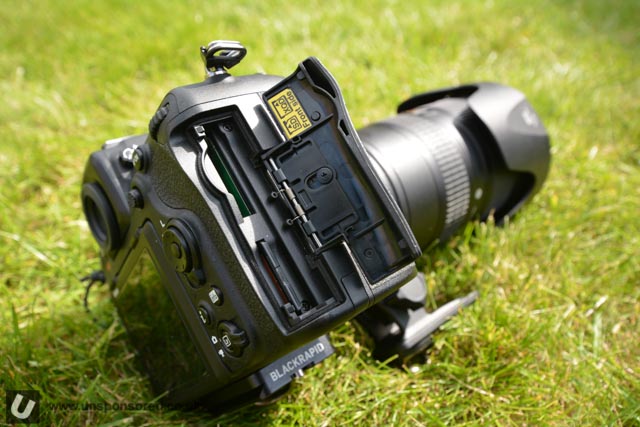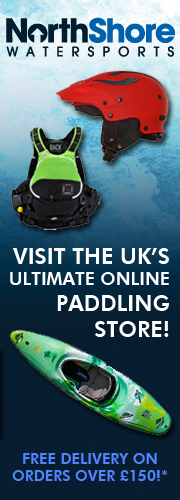We are big fans of the Nikon range of cameras at Unsponsored HQ and have worked our way from the Nikon D70 through to the Nikon D500 over the past few years. All of the images taken for the site have been taken with a Nikon camera of one sort or another. Mid 2016 we added the Nikon D500 to the gear list. We wanted a fast, and good low light performer that would be able to cope with the varying conditions we often find ourselves in. As we had been shooting with Nikon DX bodies for so long we had a good range of glass to use with the D500 but needed a new (to me) type of memory card as the D500 runs both a SD and XQD card.

One of the biggest areas that is overlooked when getting a camera setup for trips out is the speed of the your memory card. Now this doesn’t matter if your camera is a Nikon, Canon, Sony or whatever because without a good memory card you may struggle to capture the stills and video footage you want.
As cameras have become more capable the need for faster cards with greater capacity has become more important.
SD Cards – Speed Class
The Speed Class Rating is the official unit of speed measurement for all SD cards, including both full and micro sized versions. Speed Class is a minimum speed based on a worst case scenario test and represents the minimum transfer rate of data that the card is capable of.
Class 2 – 2MB/s
Class 4 – 4MB/s
Class 6 – 6MB/s
Class 8 – 8MB/s
Class 10 – 10MB/s
This can be seen on cards as a number within a circle.
SD Cards – Ultra High Speed (UHS) Class
Just to confuse things a little more there is also an Ultra High Speed (UHS) classification. Ultra High Speed 1 – U1 is the same as Class 10 (10MB/s). UHS sets a minimum transfer of data that the card is capable of in a similar way to the SD speed class.
U1 – 10MB/s (same as class 10)
U3 – 30MB/s
This can be seen on cards as a number within a bucket/U.
U3 is pretty new and is a response to ensure that consumers can easily identify those cards with the highest transfer rates suitable for 4K/2K filming. If your card is not U3 this doesn’t necessarily mean that it is not up to the job. It may simply not be labeled with the new U3 symbol. Check the transfer rates – this is the key.
Why should you care?
The Speed Class is important for video mode or camcorders, as when recording video the device is actually saving a steady stream of data. This is exactly what you are expecting a GoPro camera to do whilst filming video at high resolutions. Always get the fastest card you can.
There is always a danger that if your SD card isn’t up to it that you could encounter error messages or loss of data. When ever my GoPro has crashed or frozen it has always been down to the card I have been using.
The difficulty comes when you start looking at Speed Class and card storage size. The higher the speed class the higher the price, the higher the card capacity the higher the prices. Over the last few months I have swapped out pretty much all of my cards for the newest Lexar 1000x U3 series.
Always try and get the largest capacity of card possible with the fastest transfer speeds on your budget. Shooting in RAW or 4k HD video will fill up the GBs extremely quickly. All of my SD cards would be classified as U3 and the XQD cards have a transfer rate of up to 440 MB/s.
SD Card Recommendations
My current cards of choice are from Lexar. They are part of the professional range of cards but they aren’t too expensive. They get great reviews online and I haven’t had any issues with them over the few years they have been used.
I have cards ranging from 32GB to 64GB.
I also run a few Sandisk Extreme and Extreme Pro SD cards that I have had for a few years and use them for backups. On paper they are much slower than the Lexar range listed but again I haven’t had any issues.

XQD Card Recommendations
XQD cards are designed to be the replacement to Compact Flash. Transfer speeds and storage capacity can keep up with the demands of current cameras and the cameras that are yet to come. I must admit that buying another type of card didn’t fill me with joy, especially after seeing the price of them. But the speed of the D500 demands a card that handle the pressure. As I am a keen user of Lexar cards in recent years it made sense (to me) to stick with the same brand. Lexar produce cards of with two different transfer speeds. The cost between the two types isn’t that much so I went for the 2933x range that have a 44 MB/s transfer rate.
There are a great deal of fake SD cards out in circulation and it is important that you buy yours from a reputable supplier.
Storage:
Once you get into taking video you’ll soon build up a collection of memory cards. These things are so easy to misplace or lose. After losing a few last year I use Peli SD Card storage case. It can handle both SD and Micro SD cards at the same time, and although not fully waterproof it is water resistant and keeps the dirt/grime out. As yet I haven’t found a unit that will take the XQD cards. However as these cards are still pretty expensive compared to SD I haven’t developed a collection of them as yet!
File Transfer:
I run Macs at home and on the road and they have a great SD card slot that I use for file transfer.
As the XQD card is a new one to me I did require a card reader. I went for the Lexar USB2.0 XQD card reader and it has been working great.



Hi so im going to purchase a d500 but im not too much in 4k video so shell i go for scandisk extreme pro 64 gb U-1 or scandisk extreme pro 64 gb micro u-3, will it effect my burst mode while taking shots in Ch mode pls help!!